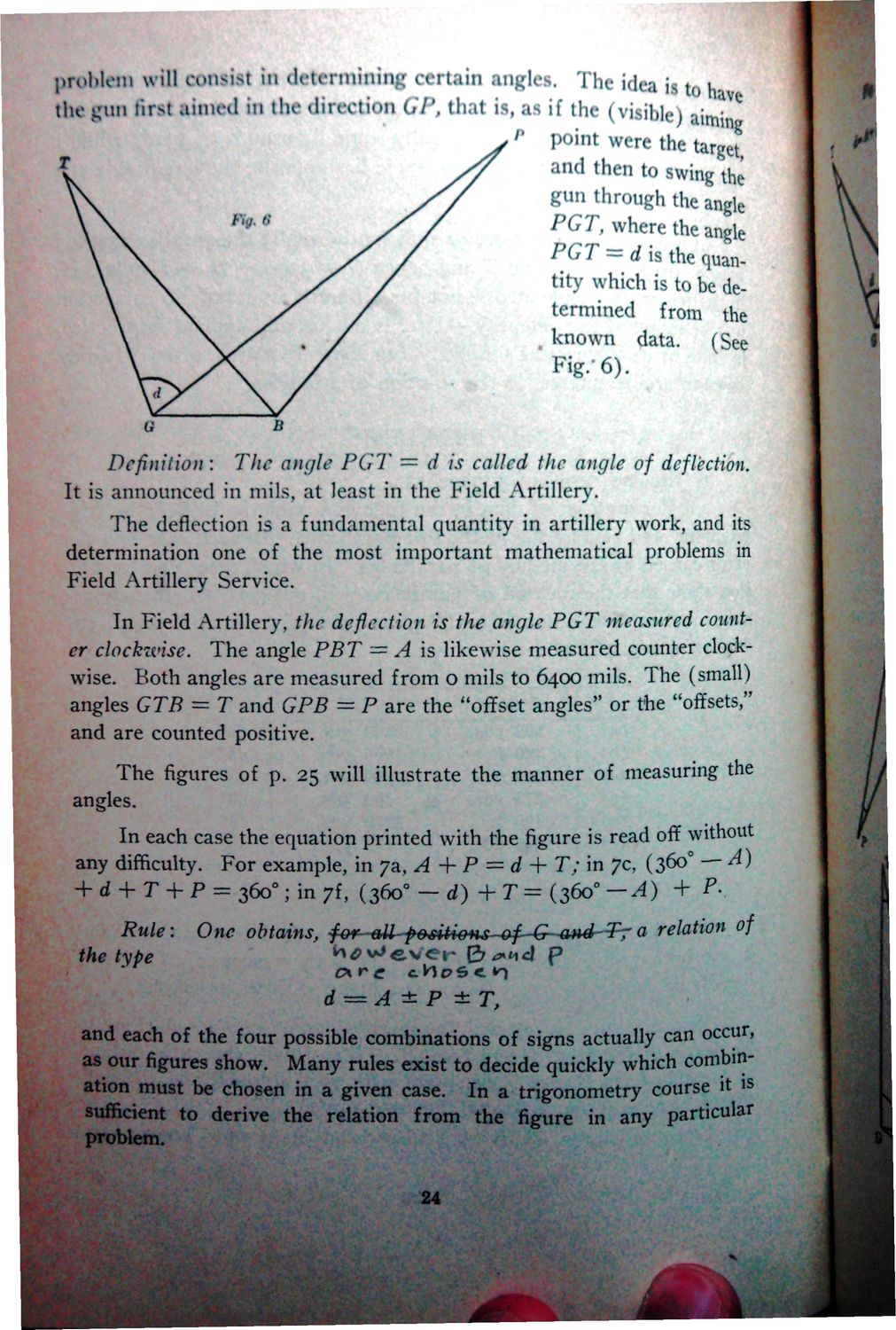| |
| |
Caption: War Publications - WWI Compilation 1923 - Article 46
This is a reduced-resolution page image for fast online browsing.

EXTRACTED TEXT FROM PAGE:
the gi etei mining certain angle ! d i rectioi i GP, that is, as / • point were the target, and then to swing the gun through the angle PGT, where the angle PGT — d\s the quantity which is to be determined from the , known data. (See Fig.'6). Definition: The angle PGT = d is called the angle of deflection. It is announced in mils, at least in the Field Artillery. The deflection is a fundamental quantity in artillery work, and its determination one of the most important mathematical problems in Field Artillery Service. In Field Artillery, the deflection is the angle PGT measured counter clockwise. The angle PBT = A is likewise measured counter clockwise. Both angles are measured from o mils to 6400 mils. The (small) angles GTB = T and GPB = P are the "offset angles" or the "offsets," and are counted positive. The figures of p. 25 will illustrate the manner of measuring the angles. In each case the equation printed with the figure is read off without any difficulty. For example, in 7a, A + P = d + T; in 7c, (360° — A) 0 + d + r + P = 3 6o°;in7f, (360 — d) + T = (360° — A) + PRule: the type One obtains, ^^U-f^fUwns-of-G-^H^^r d t f v ^ e v e r &<»id p « relation of d = A ± P ± T, and each of the four possible combinations of signs actually can occur, as our figures show. Many rules exist to decide quickly which combinbe In a trigonometry course it is sufficient from the figure in any particular problem. 24
| |